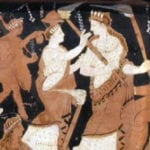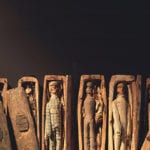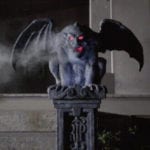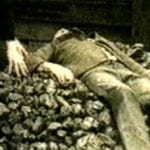 Crime
Crime  Crime
Crime  Humans
Humans 10 Unsung Figures Behind Some of History’s Most Famous Journeys
 Animals
Animals 10 Species That Refused to Go Extinct
 Weird Stuff
Weird Stuff 10 Weird Things People Used to Do at New Year’s
 Our World
Our World 10 Archaeological Discoveries of 2025 That Refined History
 Weird Stuff
Weird Stuff 10 Fascinating Facts You Might Not Know About Snow
 Miscellaneous
Miscellaneous Top 10 Things Crypto Was Supposed to Change & What Actually Did
 History
History 10 Huge Historical Events That Happened on Christmas Eve
 Music
Music 10 Surprising Origin Stories of Your Favorite Holiday Songs
 History
History 10 Less Than Jolly Events That Occurred on December 25
 Crime
Crime 10 Dark Details of Australia’s Gruesome Unsolved Wanda Murders
 Humans
Humans 10 Unsung Figures Behind Some of History’s Most Famous Journeys
 Animals
Animals 10 Species That Refused to Go Extinct
Who's Behind Listverse?

Jamie Frater
Head Editor
Jamie founded Listverse due to an insatiable desire to share fascinating, obscure, and bizarre facts. He has been a guest speaker on numerous national radio and television stations and is a five time published author.
More About Us Weird Stuff
Weird Stuff 10 Weird Things People Used to Do at New Year’s
 Our World
Our World 10 Archaeological Discoveries of 2025 That Refined History
 Weird Stuff
Weird Stuff 10 Fascinating Facts You Might Not Know About Snow
 Miscellaneous
Miscellaneous Top 10 Things Crypto Was Supposed to Change & What Actually Did
 History
History 10 Huge Historical Events That Happened on Christmas Eve
 Music
Music 10 Surprising Origin Stories of Your Favorite Holiday Songs
 History
History 10 Less Than Jolly Events That Occurred on December 25
10 Strange Unsolved Mysteries
When the conversation turns to the strange and seemingly inexplicable, certain subjects crop up like ghostly activities, unexplained anomalies, and mysterious people and creatures. For those like us who have an interest in such matters, here are ten unsolved mysteries that may not get quite as much press as others.

On January 1, Mr. Frost bought a load of coal, which was delivered to his house at 8 Ferrestone Road, Hornsey, London. From the beginning, it was clear to Frost, his wife, and three young children (or grandchildren; the family’s relationships aren’t consistent in newspaper accounts) that this was no ordinary coal. When burned in the fireplace grate, the coal exploded or even more unsettling, jumped out of the grate, took a stroll across the floor, and vanished, only to reappear showers of sparks in another room. Frost sought help from a police inspector, who experienced some frightening incidents first hand.
The terrifying activity escalated. Objects like coal scuttles moved without being touched. A knife and a loaf of bread flew across the room. Knick-knacks fell off shelves. Events like these were witnessed by Rev. A.L. Gardiner, Vicar of St. Gabriel’s, and Dr. Herbert Lemerle. Speculation abounded. The coal came from British mines, and it was supposed by some that disaffected miners had mixed dynamite with coal to cause explosions (later disproved). Others believed the poltergeist activity was caused by the spirits of angry mine workers, while skeptics blamed the boys.
The five-year old girl, Muriel Frost, died on April 1, purportedly frightened to death by the poltergeist activity in her family home. Her brother, Gordon, was hospitalized following a nervous breakdown after his sister’s death. I haven’t been able to discover what happened to the Frost family following these tragedies.

Roland Moody of Southampton, England, was startled to hear small, solid objects hitting the glass roof of the conservatory attached to his house. The objects turned out to be hundreds of seeds—small mustard seeds and cress seeds coated in a jelly-like substance. More seeds continued to fall during the day, eventually covering his garden. One of his neighbors, Mrs. Stockley, told Moody she’d had a similar experience the previous year.
The following day, Moody’s home was struck by corn, pea, and bean seeds that seemed to simply fall out of the sky. His neighbors on both sides were also pelted with peas and beans. Only those three houses in the neighborhood were targeted for the bizarre showers of seeds, and a police investigation was unable to pinpoint a source.
The phenomena gradually decreased and went away. By that time, Moody and his neighbors had endured twenty-five separate barrages and collected ten pounds of beans from their gardens. Moody himself gathered eight buckets of cress seeds. He claimed the produce grown from the seeds was good quality. Both Moody and Stockley were interviewed for Arthur C. Clarke’s Mysterious World television series in 1980. To date, no adequate explanation for the weird showers has been found.

Norah Emily Editha “Netta” Fornario, a writer, friend of Dion Fortune, and initiate of a branch of the Hermetic Order of the Golden Dawn called the Alpha et Omega Temple, believed herself a magical healer. In August or September, Netta left London and traveled to Iona, an island off Scotland’s west coast, where she met her death under mysterious circumstances. Explanations for her strange demise range from psychic murder, hostile spirits, or exposure to the elements and heart failure (listed as the official cause of death).
Arriving on Iona, Netta lodged in Traymore with Mrs. MacRae. By day, she explored the island. By night, she entered into traces and attempted to contact the island’s spirits. She continued this routine for several weeks until Sunday, November 17, when her behavior inexplicably changed. She packed her bags, intending to return to London. She told Mrs. MacRae that she’d been disturbed telepathically and received messages from other worlds. The landlady noticed Netta’s silver jewelry appeared to have turned black overnight. Later, she stated she’d changed her mind and would be remaining on Iona.
At some point the next day, Netta went missing. Her body was found on Tuesday on a “fairy mound” near Loch Staonaig. She was naked beneath a black cloak, and lay on a cross carved from the turf with a nearby knife. Her skin was marred by scratches. The soles of her feet were cut and had bled as if she’d run over rough ground. Was she killed by a psychic murderer? Lost her way and succumbed to hypothermia? Or died accidentally during a ritual? What caused her injuries? In the decades since the tragedy, the debate continues.
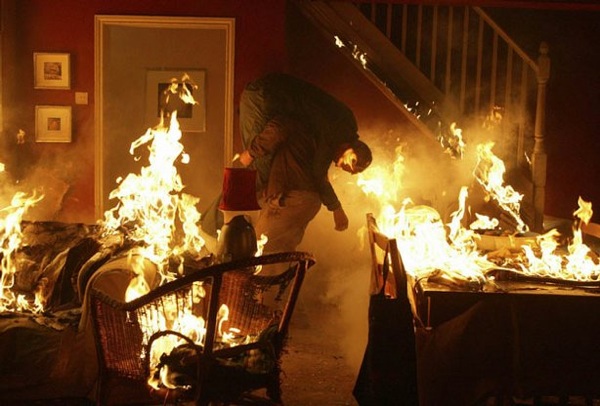
At his farm near Odon, Indiana, William Hackler finished having breakfast with his family and left the house. On his way to the barn, he smelled smoke. When he hurriedly returned to the house, he discovered a fire in the upstairs bedroom wall (note the house had no electricity). The local volunteer fire department was called in and the blaze quickly extinguished. However, that was only the start of the Hackler family’s day long ordeal.
After the truck left, another fire broke out, this time in a mattress in an upstairs guest room. It seemed as though the fire had been set from inside the mattress! Throughout the day, more fires broke out all over the house, some under the gazes of astonished witnesses. By 2:00 p.m., more fire fighters were called in, and by the end of the day, twenty-eight seemingly spontaneous fires were extinguished, including one that started between the covers of a book.
The fires ended as mysteriously as they began. Hackler tore down the house and built a new one from the reclaimed lumber. Neither he nor his family experienced anything like the Odon fire poltergeist again.

Students from the University of South Carolina in Columbia were walking near the Longstreet Theater late one evening when they were stopped in their tracks by the appearance of a gray faced man wearing a silver suit, who removed a manhole cover and disappeared into the sewer. At the time, the strange man was dubbed, “Sewer Man,” but he would soon be given a much different name following another, more terrifying encounter in April 1950.
This time, a policeman discovered a man in silver near the remains of mutilated chickens. He shone his flashlight on the figure. To his horror, the strange man had a third eye in the center of his forehead. The policeman went to his squad car and radioed for help. By the time other officers arrived, the man was gone. Another encounter by students in the Sixties in the steam tunnels under the university kept the memory of Third Eye Man alive.
Although the tunnels were thoroughly searched, no physical evidence of Third Eye Man’s existence has ever been found. Is he a ghost? A creature? An alien? A prank? No one knows, but sightings continued into the early 1990s.

Women in Bridgeport, Connecticut were terrorized for months by a “phantom stabber” who used a sharp, pointed weapon to jab their buttocks or breasts before fleeing the scene. Witnesses gave a confusing variety of descriptions of the Connecticut Jabber, as he became known. One thing the statements had in common—whoever he was, the Jabber seemed unusually fast on his feet, disappearing while the victim screamed in shock and pain.
He had no particular victim profile and preferred no particular location or time of day. Every few months, another woman was attacked in the street or in a public place like a department store, a church, or a library entrance. Despite continuous police investigation that eventually garnered several suspects, the Jabber was never identified.
By June 1928, the Jabber’s victims numbered twenty-six. The attacks abruptly stopped and were never repeated in that city. While various explanations have been put forth over the years—mass hysteria whipped by media frenzy, a sadist indulging his whims, a ghost with a grudge against curvaceous women—no perpetrator was ever caught.

A fourteen year old peasant girl from La Perriere in the Normandy region of France began distressing her friends with her strange powers. Angelique Cottin became known as the “Electric Girl” for the poltergeist-like effect she had on objects such as making a weaving frame dance around the room or a heavy table float through the air. Chairs moved away when she tried to sit on them. Beds wouldn’t stay still, either, and people received electric shocks when they came near her. Paper and pens flew off tables when she held out her left hand.
Angelique also suffered convulsions and injuries due to the frequently violent movements made by her body. Her parents believed she was possessed and took her to church, but a priest convinced them the girl’s powers had a physical cause, not a spiritual one. The next step was examination by scientists in Paris, including famous physicist François Arago, who said the phenomena were genuine and the result of electro-magnetism.
Against the scientists’ advice, the Cottins decided to exhibit Angelique to paying customers. In April 1846—just a few short months after the ordeal began—the unexplained phenomena inexplicably stopped and she lost her electric powers for good.
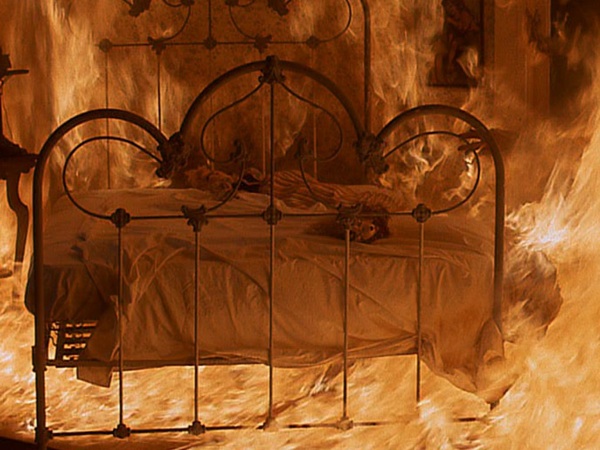
In Bladenboro, North Carolina, Mrs. Charles Williamson—an ordinary housewife—was terrified when her cotton dress suddenly and inexplicably burst into flames. She hadn’t been standing near a fireplace, stove, or other ignition source, and she hadn’t been smoking or using flammable chemicals. Fortunately, her husband and teenage daughter acted quickly, ripping the flaming dress off her before she suffered any injuries. Curiously, neither did Mr. Williamson or the daughter, who’d put out the fire with their bare hands.
The ordeal by fire continued the same day inside a closet when a pair of Mrs. Williamson’s trousers burned until only ashes remained. The next day, in front of witnesses, a bed spontaneously began to burn as well as curtains in another room. For three more days, fires sprang out of nowhere, burning blue flames that couldn’t be extinguished until they’d entirely consumed the household object in question. No one was injured by the flames, either. The Williamsons had enough by day four and left the house.
Police, electricians, and arson investigators searched the house, but were unable to find a logical explanation for the fires. On the fifth day, the fires simply stopped. The Williamsons moved back home and weren’t troubled by the apparent fire poltergeist again.

Although there was nothing wrong with her vision, at age fifteen, Margaret Foos was skilled at “blind reading”—reading books through touch alone while tightly blindfolded. With her father’s encouragement, she practiced and nurtured her talent. William Foos believed he’d discovered a way of teaching blind people to “see” through their skin in a form of extrasensory perception. As his first pupil, Margaret was to demonstrate this method.
In 1960, Foos took his daughter to Veterans Administration Center in Washington, DC to be subjected to scientific tests by psychiatrists. While wearing a “foolproof” blindfold supplied by the VA doctors, Margaret used her hands to read sections of the Bible, identify objects and colors, trace lines, play checkers, and other tests. Her father was in the room, but he left occasionally, and did not appear to be giving her signals.
In the end, the VA psychiatrists admitted bafflement, but insisted that although Margaret had passed their tests, they couldn’t explain how she’d done it, and therefore couldn’t admit she could see without using her eyes. Was she fooling everyone, or did she have a genuine extrasensory power? Who knows, but the FBI thought enough of the idea of blind reading to investigate William Foos and his claims.

An unidentified “ghost sniper” haunted the Garden State beginning in November 1927 in Camden, New Jersey. The car of Albert Woodruff and several other vehicles had their windshields shattered by bullets that weren’t found on the scenes. A city bus on the Camden Bridge had its windshield broken, too. Another bus on the Federal Street Bridge came under fire. More homes suffered attacks, and a store window was broken. In all cases, no one was injured except by flying glass, and the bullets vanished into thin air.
The mysterious sniper visited Collingswood and Lindenwood, New Jersey, and also briefly traveled to Philadelphia, Pennsylvania. His targets were mainly private automobiles, taxis, trolleys, buses, and residences, although he did fire on at least one policeman. Only a single witness testified to hearing the report of a shot. Another believed he’d heard a man’s sinister laughter, but the other victims said they’d heard and seen nothing.
The attacks suddenly stopped in 1928. Despite police investigations and a few copycats whose missiles (like a blue marble and a screw) were discovered at the scenes, the ghost sniper and his phantom bullets were never found.

